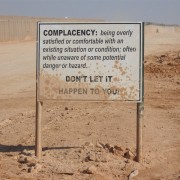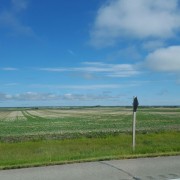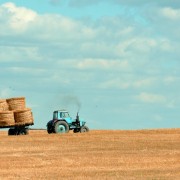Shock and Awe During Ag In The Classroom
It’s something I should have done long ago, but finally took the step and volunteered for Ag in the Classroom. Considering the rapid disconnect that non-farming people have from their farming roots, which is typically as many as 2 or 3 generations now past, we as passionate AGvocates must do our share (and more) to help bridge the gap, both the knowledge and culture gap, so that we all can achieve a greater understanding of each other.
My experience took me to 2 classrooms: Mrs Ewart-Molesky’s grade3/4 class at Grant Road School in Regina, and Mrs McMurtry’s grade 3 class at Jack Mackenzie School also in Regina. I was not surprised to learn that none of these children lived on a farm; the closest any of them came was one child in each class whose grandparents still farm. What did surprise me was how many of these youngsters had never been to a farm. That reinforced my perception of just how far removed these young people are from agriculture.
Part of the program was for me to read the children an ag based story. The book that was provided to me by the Ag in the Classroom program was titled What’s Growing Around Us. The story journeyed through the experience of a school aged girl whose mother took her to several different locations to learn about where food really comes from as part of her own school homework. The children listening to me read this story were fascinated by how many products from their daily lives, products beyond food, are derived or partly derived from agriculture.
I took the liberty to give these children some perspective on just how much Canadian farmers can produce. I used real life examples of how big a field can be, how big an acre is, and just how much can be produced on that acre in terms that these children could understand. The “shock and awe” from these students at the number of loaves of bread that can be produced from one acre of wheat was quite entertaining.
I closed my presentation to these students by taking some more liberty. I found some pictures online that I used to clearly illustrate what a farm is today versus what is a stereotypical view of a farm. The faded red barn, open tractor, handful of cattle, and a farmer in overalls is what the stereotype is, and as I expected, it is what the children gravitated to. The pictures I shared with these students of modern grain farms and equipment brought more “shock and awe.” Some of what I shared with them that day included an aerial view of a modern farm yard, complete with a grain leg, several large shops, and a large modern home; the inside of a tractor cab with all the monitors and controllers needed during seeding; and a drone (which was the REAL wow factor.) I explained that while they see the drone as a super-cool toy, farmers use the drone as a highly efficient tool for checking crops, livestock, etc.
I left no doubt in their minds that farming is very technologically advanced, probably more so than their homes, entertainment systems, and video game consoles combined. I felt it was incredibly important to stress that the perceptions of what is a farm have changed, and will continue to change.
Direct Questions
With farming practices and food production garnering more attention and press than ever before, what are you doing to share the positive message about agriculture?
How are you managing your operational practices against the message that we deliver to non-farming people to ensure that what we say and what we do are consistent?
What are you doing to be an agriculture advocate (or as we prefer to say, “agvocate?”)
From the Home Quarter
While I thoroughly enjoyed my time volunteering for Ag In The Classroom, it came and went very quickly. I will certainly make myself available to visit more schools and educate more children in the future. It was a very rewarding experience.
What I would like to do at some point is speak to a class of high-schoolers, young minds that are forming their own opinions on issues of the day whether influence comes from the media, at home, or their teachers, in an effort to challenge them on any misconceptions about agriculture. The Grade 3’s were hanging on every word I said, and soaked up the message like a sponge. The older kids will hopefully want to “get into it” a little bit where we could ideally have an open and respectful dialogue.
Can you tell I enjoy a good argument?












Leave a Reply
Want to join the discussion?Feel free to contribute!